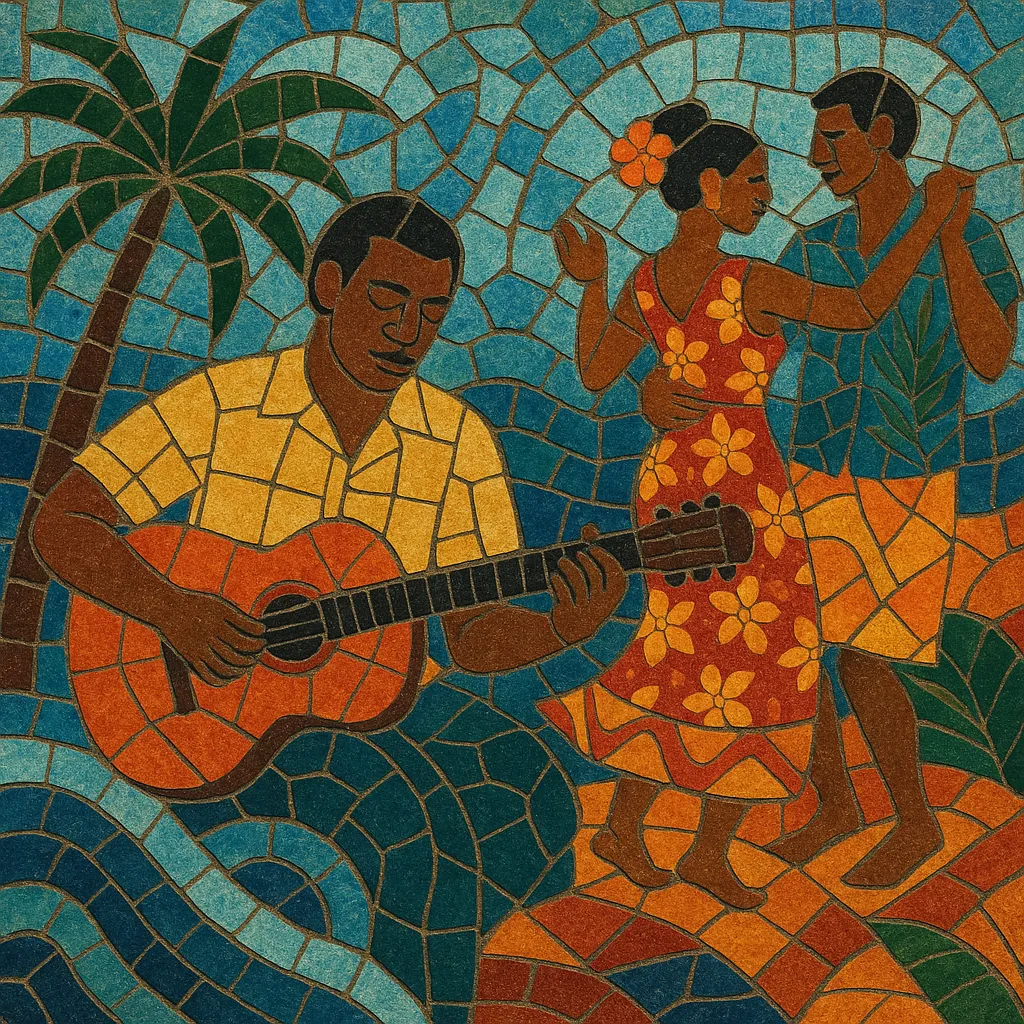Vude (pronounced “voo-day”) is a contemporary Fijian dance-pop style that fuses traditional iTaukei (indigenous Fijian) rhythms and call‑and‑response singing with modern club grooves.
It typically blends elements of disco, funk, Pacific reggae, and island pop, resulting in buoyant, party-ready tracks with catchy refrains, rich vocal harmonies, and a strong emphasis on participatory dance.
Lyrically, vude songs often celebrate community, romance, celebration, and everyday life, delivered primarily in the Fijian language with instantly recognizable hooks designed to get crowds moving.
Vude emerged in Fiji during the 1980s as urban musicians and producers began marrying traditional iTaukei melodic and rhythmic sensibilities with global dance styles. Nightlife in Suva and other urban centers—plus access to disco, funk, and reggae records—encouraged experimentation. Early pioneers crafted a distinctly Fijian dance sound: four‑on‑the‑floor or reggae‑leaning rhythms, bright guitars and keyboards, and choral refrains rooted in local singing traditions.
By the 1990s, vude had become a staple of parties, festivals, and family gatherings across Fiji. Star performers—most famously Laisa Vulakoro, often dubbed the “Queen of Vude”—helped codify the style on record and on stage, amplifying its presence on radio and television. Producers and bands integrated more polished arrangements, electronic drum programming, and hook-forward songwriting, while keeping the community feel of Fijian ensemble vocals.
Today, vude continues to thrive as a living, dance-oriented tradition. Contemporary artists update production with modern pop and EDM sheen, while maintaining familiar grooves, group chants, and dance breaks that invite audience participation. The style remains central to Fijian popular culture and has influenced how Pacific Island pop presents upbeat, communal celebration.


